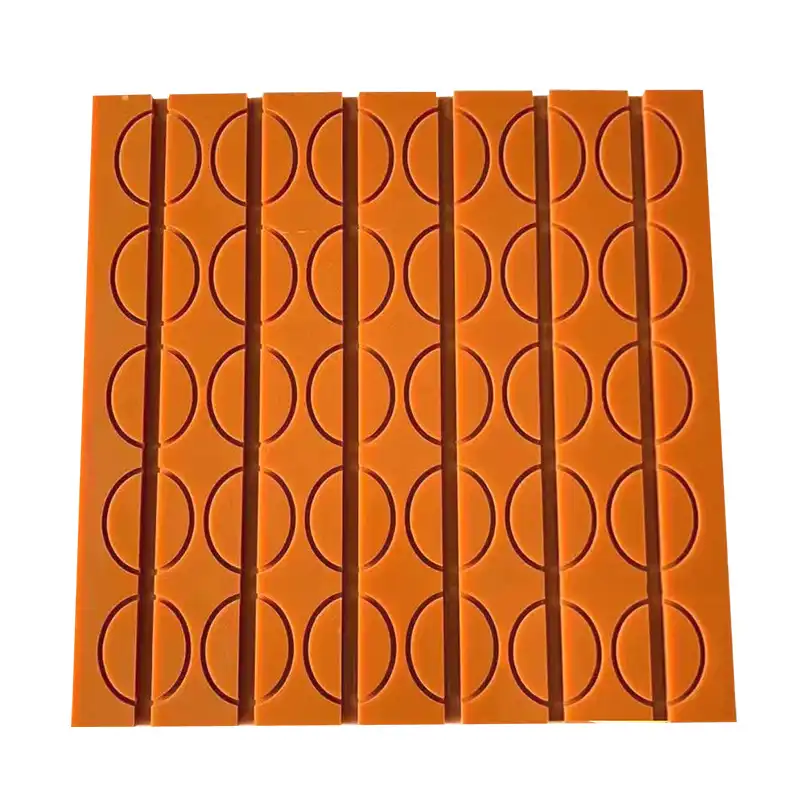The Fascinating History and Properties of Bakelite
The Birth of Bakelite: A Revolutionary Material
Bakelite, invented by Leo Baekeland in 1907, marked a pivotal moment in the history of synthetic materials. This thermosetting phenol formaldehyde resin quickly gained popularity due to its unique properties. Bakelite's heat resistance, electrical non-conductivity, and durability made it an ideal choice for various applications. From electrical insulators to jewelry, Bakelite sheet and Bakelite board became ubiquitous in manufacturing.
The versatility of Bakelite led to its widespread use in consumer goods. Art Deco designers embraced its moldability, creating iconic pieces that defined an era. Bakelite's impact extended beyond aesthetics, revolutionizing industries such as automotive and electronics. Its ability to withstand high temperatures and resist electrical currents made it indispensable in the production of early radios and telephones.
Identifying Authentic Bakelite
For collectors and restorers, accurately identifying genuine Bakelite is crucial. Several methods can help distinguish Bakelite from other plastics. The "hot water test" involves placing the item in hot water; authentic Bakelite emits a distinct formaldehyde odor when heated. Another method is the "409 test," where a cotton swab dipped in Formula 409 cleaner is rubbed on an inconspicuous area. Genuine Bakelite will leave a yellow residue on the swab.
Visual cues can also aid in identification. Bakelite often exhibits a rich, deep color and a certain heaviness compared to other plastics. When tapped, it produces a distinctive "clunk" sound. However, these methods should be used cautiously, as they can potentially damage the item. For valuable pieces, consulting an expert or using non-invasive spectroscopic techniques is advisable.
The Unique Challenges of Working with Bakelite
Restoring Bakelite presents unique challenges due to its thermosetting nature. Unlike thermoplastics, Bakelite cannot be melted and reshaped once cured. This characteristic necessitates specialized restoration techniques. Bakelite's tendency to develop a patina over time adds another layer of complexity to the restoration process. This surface oxidation, while prized by some collectors, may need to be addressed during restoration.
The material's sensitivity to certain chemicals also requires careful consideration when cleaning or repairing Bakelite items. Harsh solvents can cause irreversible damage, making it essential to use gentle, appropriate cleaning methods. Additionally, Bakelite's brittleness in thin sections means that handling and repairing delicate pieces demands extra caution and skill.
Essential Techniques for Bakelite Restoration
Cleaning and Polishing Bakelite Surfaces
Proper cleaning is the foundation of any successful Bakelite restoration project. Begin with a gentle approach using mild soap and lukewarm water. Avoid harsh chemicals or abrasive materials that could damage the surface. For stubborn dirt, a mixture of baking soda and water applied with a soft cloth can be effective. Always test cleaning methods on an inconspicuous area first.
Polishing Bakelite requires patience and the right materials. Fine-grit sandpaper can be used to smooth out minor scratches, followed by progressively finer grits. For the final polish, specialized Bakelite polishing compounds or automotive polishes can restore the material's characteristic shine. Electric buffers, when used carefully, can achieve excellent results on larger flat surfaces like Bakelite sheet or Bakelite board.
Repairing Cracks and Chips in Bakelite
Addressing structural damage in Bakelite items demands precision and the right adhesives. Epoxy resins specifically formulated for Bakelite repair offer strong bonds and can be tinted to match the original color. For filling larger gaps or missing pieces, epoxy putty can be molded and shaped before it sets. After curing, the repaired area can be sanded and polished to blend seamlessly with the surrounding surface.
In cases where a Bakelite sheet or board has split, careful clamping during the repair process is crucial. Using protective materials between the clamps and the Bakelite surface prevents further damage. For intricate repairs on smaller items, magnification and specialized tools may be necessary to ensure precision and maintain the item's integrity.
Color Restoration and Matching
Restoring the vibrant colors of Bakelite can dramatically improve an item's appearance. Faded or discolored surfaces can often be revitalized through careful polishing and the application of specialized Bakelite dyes. These dyes penetrate the surface, restoring depth and richness to the color. It's important to match the original hue accurately, which may require mixing different dye colors.
For items with significant color loss or damage, more extensive restoration may be necessary. This could involve carefully removing the oxidized layer to reveal the original color beneath. In some cases, particularly with rare or valuable pieces, it may be preferable to preserve the patina rather than attempt full color restoration. The decision should be based on the item's historical value and the owner's preferences.
Advanced Restoration Techniques for Bakelite Enthusiasts
Recreating Missing Parts with Modern Materials
When restoring Bakelite items with missing components, creating replacements that match the original can be challenging. Modern epoxy resins can be cast and colored to closely mimic Bakelite's appearance and properties. This process involves creating molds from existing parts or designing new ones based on historical references. The key is achieving the right color, texture, and weight to seamlessly integrate with the original Bakelite.
3D printing technology offers another avenue for recreating missing parts. While the material properties differ from Bakelite, 3D printed components can serve as excellent templates for casting or as temporary replacements. The ability to precisely replicate complex shapes makes this technique particularly valuable for restoring intricate Bakelite pieces.
Preserving and Enhancing Bakelite's Unique Patterns
Many Bakelite items feature distinctive marbled or swirled patterns that contribute significantly to their aesthetic appeal. Preserving these patterns during restoration requires a delicate touch. When polishing or repairing such pieces, it's crucial to work in small sections to maintain the integrity of the pattern. In some cases, carefully applied dyes can enhance faded patterns, bringing them back to their original vibrancy.
For Bakelite sheet or board with elaborate inlays or designs, restoration may involve carefully cleaning each element separately. This meticulous process ensures that the contrast between different colors and patterns is preserved or enhanced. Specialized tools, such as fine brushes and dental picks, can be invaluable for working on intricate details without disturbing surrounding areas.
Ethical Considerations in Bakelite Restoration
The restoration of antique Bakelite items raises important ethical questions for collectors and enthusiasts. Determining the appropriate level of intervention requires balancing the desire to return an item to its original condition with the need to preserve its historical integrity. Over-restoration can potentially diminish an item's value and authenticity. It's essential to document all restoration work and, when possible, ensure that interventions are reversible.
Transparency in the restoration process is crucial, especially when dealing with valuable or historically significant pieces. Providing detailed records of the restoration work, including before and after photos, helps maintain the item's provenance. This documentation not only adds value for collectors but also contributes to the broader understanding and preservation of Bakelite's cultural and historical significance.
Conclusion
Restoring vintage Bakelite treasures is a rewarding endeavor that combines historical appreciation with technical skill. From understanding the material's unique properties to mastering advanced restoration techniques, the journey of bringing these artifacts back to life is both challenging and gratifying. As we've explored, the process involves more than just physical restoration; it's about preserving a piece of history and the stories these objects tell. For collectors and enthusiasts alike, the art of Bakelite restoration offers a tangible connection to the past and a way to ensure these remarkable pieces continue to be appreciated for generations to come.
Contact Us
Are you inspired to start your own Bakelite restoration project? Whether you're looking for high-quality Bakelite sheet or Bakelite board for your restoration needs, or seeking expert advice on working with this fascinating material, we're here to help. Contact us at info@jhd-material.com to learn more about our products and services tailored for antique collectors and Bakelite enthusiasts. Let's work together to preserve and celebrate the enduring legacy of Bakelite!






